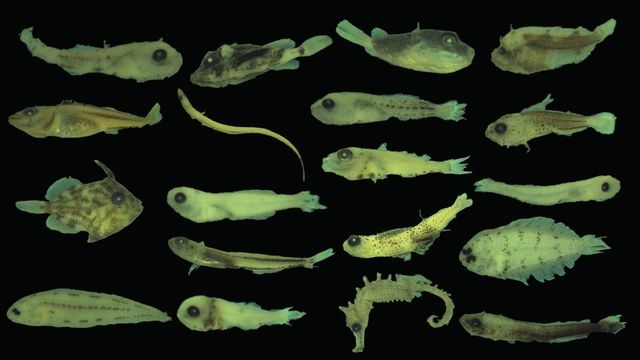Is climate change impacting fish along the NC coast?
I sat down with Dr. Rebecca Asch, a professor at East Carolina University, to discuss recent research that looked at fish larvae (juveniles) in Beaufort and the pattern changes happening due, in part, to warming water temperatures.
Posted — UpdatedWhile it is important that we continue to monitor the warming of the ocean temperatures, it is also important to understand the potential impacts that warming temperatures could mean for fisheries along the North Carolina coast.
I sat down with Dr. Rebecca Asch, a professor at East Carolina University, to discuss recent research led by one of her graduate students, Christopher Thaxton, in collaboration with NOAA to take a close look at fish larvae (juveniles) in Beaufort and the pattern changes happening due, in part, to warming water temperatures. Data has been collected on the amounts of fish larvae in this area since 1986 and they took a look at 10 species, including the American Eel, Pinfish, Croaker, and Flounder.
On average, they found that fish larvae are entering the estuarine habitat earlier, but no change as to when they stop arriving. So, there is a longer season as to when these fish larvae are using this particular habitat. Asch says that while there has not been a dramatic rise in the water temperatures at this particular location, they have warmed slightly, and the fish are still reacting to even those small changes. She says, “some of the changes are quite large” with some fish entering two months earlier than they used to.
So, what does this mean? Why do we care if little fish larvae want to enter an estuary earlier than they used to? Asch says it’s all about the resources. Fish require prey (food) to survive. Larvae entering the estuaries earlier likely means the fish are reproducing earlier. If their prey is doing the same thing, maybe this is all ok and there will be enough food to go around. But if the prey do not adjust in the same manner, this could mean problems for the survival of these fish. If they don’t have enough prey, survival becomes much more challenging for these juvenile fish. Asch says this is the next area that they plan to explore.
These juvenile fish also use the estuaries to hide from predators during this important growth stage. Asch has colleagues investigating the seasonality changes in the sea grass and salt marsh habitats in these estuaries. Her colleagues are noticing some changes in the seasonalities. This could mean that when the larvae enter the estuaries earlier, they could have trouble finding food AND a safe place to hide from predators, making it harder to survive.
Asch says, “with climate change for most species you’re going to have winners and losers.” She thinks as the temperatures warm, we might have more tropical fish, but fewer temperate fish. Some tropical fish that could make it to North Carolina and not survive the winters, maybe they can actually begin to live through our winters. The tropical fish might be the “winners." The losers? They have found large changes in the distribution of Summer Flounder. Asch says we are seeing fewer in North Carolina. We will likely have some temperate fish be the “losers” as temperatures continue to warm.
Asch says it’s important to adapt to these climatological changes on both the management and recreational side, and studies like this might allow us to be more further looking in anticipating changes we might see in the future.
Related Topics
• Credits
Copyright 2024 by Capitol Broadcasting Company. All rights reserved. This material may not be published, broadcast, rewritten or redistributed.





